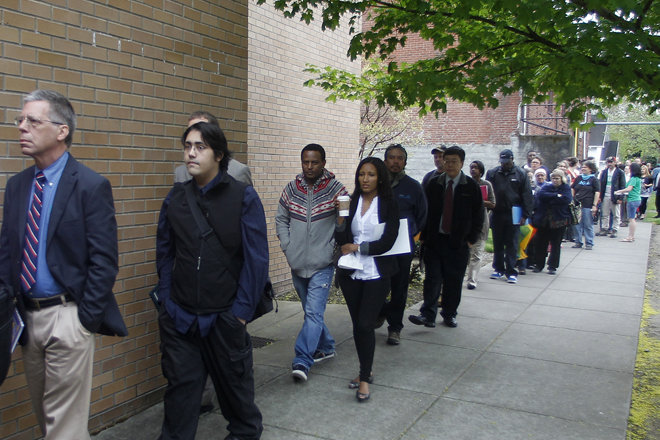Payrolls were up 175,000 last month as the unemployment rate ticked up to 7.6%, according to this morning’s employment report from the Bureau of Labor Statistics. The payroll number was slightly ahead of expectations (analysts were expecting about 165,000), and the tick-up in unemployment appears to be due to people entering the job market looking for work.
The entry of over 400,000 into the labor market led the closely watched labor force participation rate to tick up slightly as well, from 63.3% to 63.4%. I expect the historically low LFPR to start rising as most working-age people can only sit out the slowly improving job market for so long. This will, however, put upward pressure on the jobless rate as more job seekers compete for slots.
What we have here is a high stakes game of musical chairs, as payrolls grow at a steady, if not-that-impressive, clip, essentially adding chairs to the game. Meanwhile, more players are coming off the sidelines looking for places to sit. Last month, there were more new players than seats. In future months, we’ll keep a close eye on how that balances out.
The music, of course, is employer demand and while it hasn’t been the blues of late—employers are adding consistently adding jobs, averaging 194,000 per month over the past six months—neither has it been particularly up-tempo. The Federal Reserve continues to try turn up the volume, as Ben and Janet take extended solos on unconventional instruments. But Congress is pushing back the other way, allowing fiscal headwinds like the sequester to slow the rate at which chairs are added to the circle.
As is sometimes the case, investors in financial markets and working people had opposing interests in this morning’s jobs report. Equity and bond markets fear that a jump in payrolls and slide in unemployment will lead the Federal Reserve to slow the music, i.e., to begin its “tapering” program and reduce its $85 billion/month in bond buys sooner than later. Families that depend on their paychecks, on the other hand, obviously welcome good news on jobs as less slack in the labor market improves the likelihood that some of the economy’s growth flows their way.
We’ll see when the markets open, but this month’s results may have walked a tightrope in this regard, with employment only slightly beating expectations and the jobless rate ticking up, so perhaps there’s a little something for both working families and skittish markets here: a few more chairs in the game but the tempo remains subdued.
In sum, and I’ll get to the details later (and link to Chad’s CBPP analysis when it’s up), a decent jobs report suggesting that the underlying pace of job growth is stable but not fast enough to reliably and quickly bring down the unemployment rate, especially if more people keep coming into the job market.

